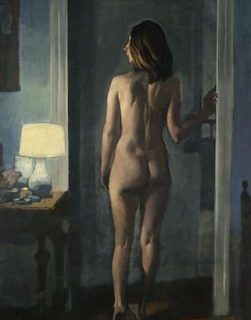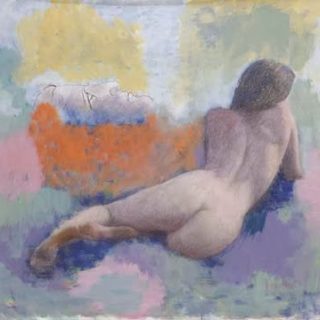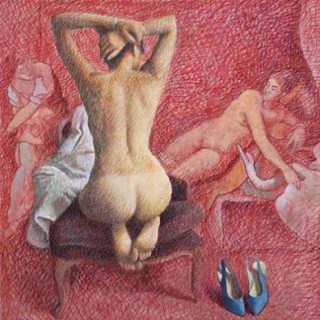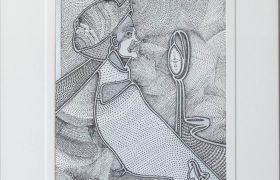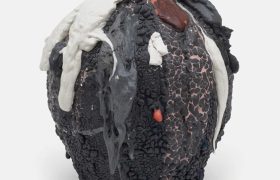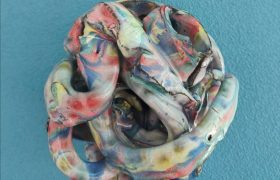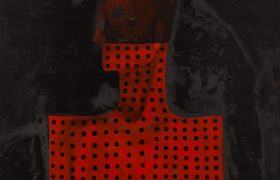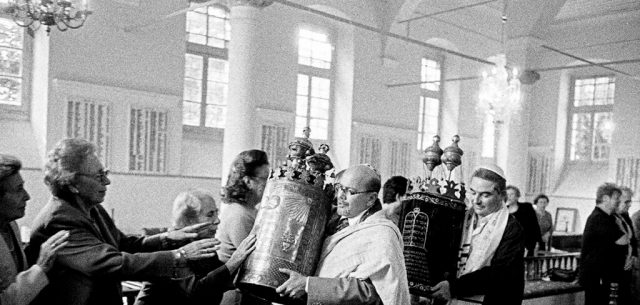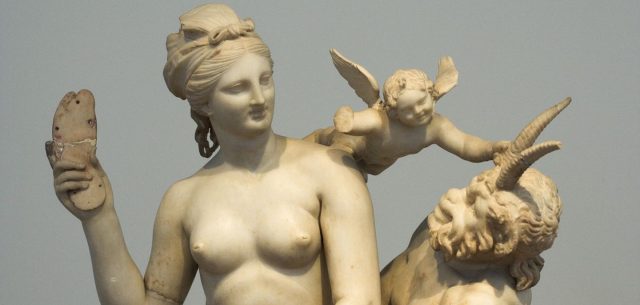Farewell Pavlos Samios: An Artist in Love with Love
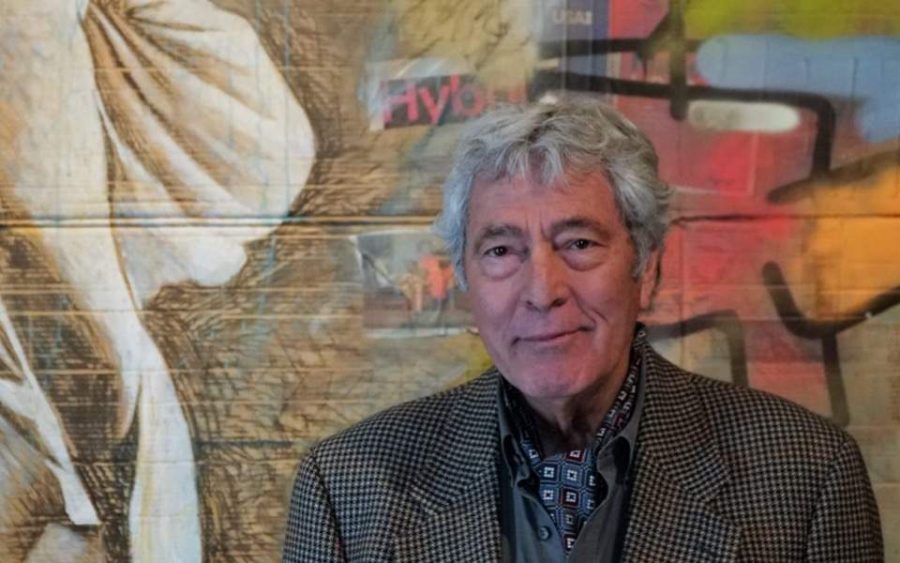
“Everything originates from love.” To artist Pavlos Samios, who lost his battle with illness last week, painting was merely “daily life seen in a metaphysical way”. His intimate canvasses oozed vitality and old-world elegance – much like this prolific and treasured artist himself.
Like his larger-than-life, colour-soaked paintings, an encounter with Pavlos Samios left an indelible impression. He passed away on February 4, 2021 after a battle with cancer. His last exhibition seemed eerily prescient – in some ways, it’s as if the lack of human interface brought upon us by the pandemic seemed to weigh on him particularly heavily. For Pavlos, people were at the epicentre of his paintings. His nostalgic quest for the sense of community offered by cafés was palpable in his renderings of Café Paradise, named for a coffee shop he used to frequent at Plateia Attikis: “It was the local hangout of a neighbourhood that drew a very mixed crowd; labourers, old men, pimps. A crowd that, from the outside, shared nothing in common, but we all “communed” there together.”

Pavlos Samios at the Broken History exhibition in 2019
“O Paradeisos” encompassed all of the beauty of the post-neoclassical tradition, all the joy and the misery of the whole of Greece. Moments of sensuality, of joy, a light that shone from the faces of the people themselves; and in the afternoons, the old boys who drank their coffee without talking, just passing through. I have gained so much from cafés, and I wanted to ensure their perpetuity,” Samios confesses.
That is why his works today are able to function as icons, as shrines not to a single era, but to a way of life.
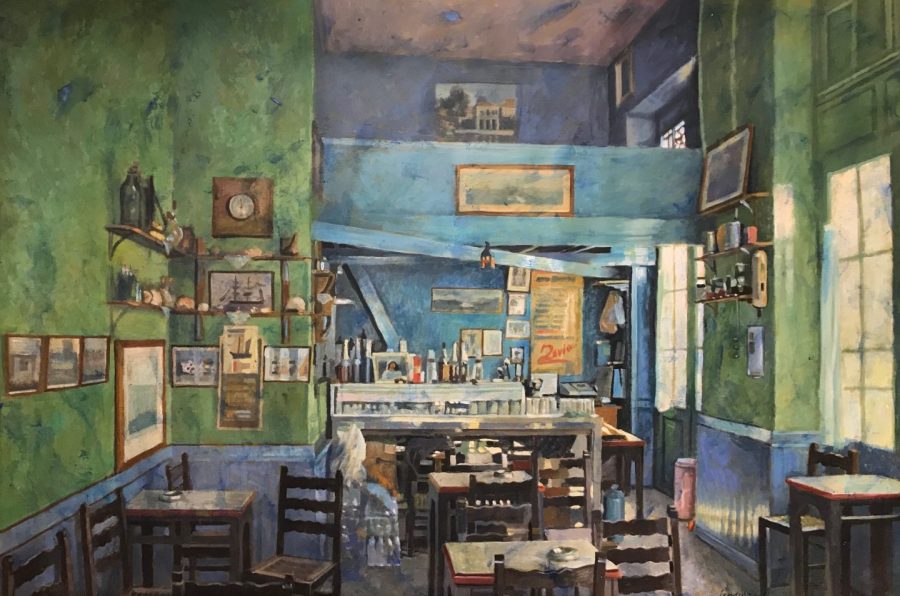
Cafe Aegina from Samios’ Cafe Paraside exhibition at Skoufa Gallery in 2020
In our new pandemic reality, with relationships being tested to breaking point, Pavlos believed that “the human need has never stopped looking for the body, the aura, the gestures, the gaze, without the mediation of a screen. Because, what is the thing that always reassures us when everything around us feels threatening? People. And, most of all, our own people. The concept of “our own” contains, in itself, a safe haven, a sea that you slip and dive into, float on your back, with the sun on your face, threatened by nothing.”
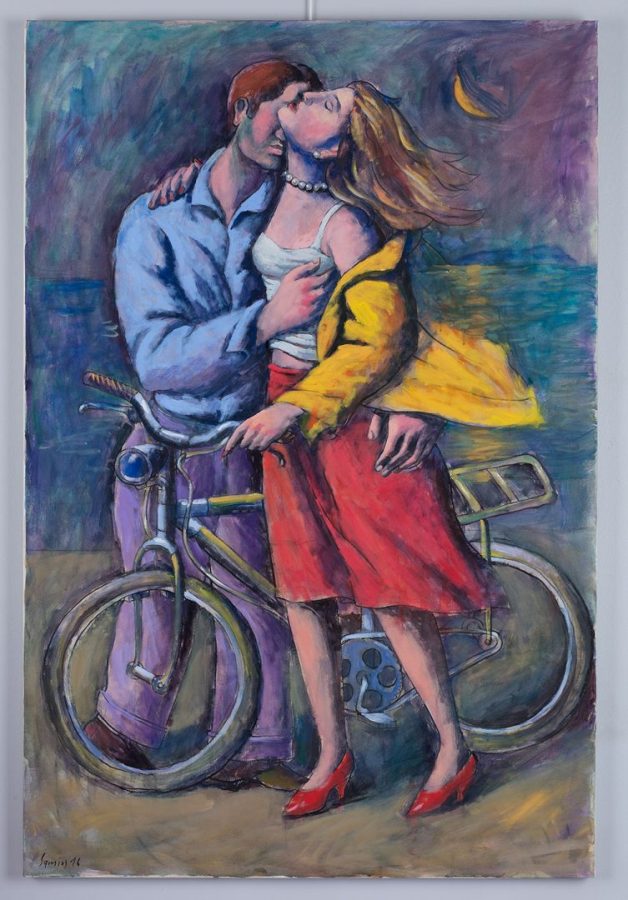
Pavlos Samios’ trademark red high-heeled shoes
At a time when covering our faces means protection and preservation of life, the need for figurativeness, for showing those things we once knew as everyday life, is becoming an imperative. This is no longer a “political” stance, as some Greek neo-figurative painters claim in order to declare its value, nor does it resemble a “game of the imagination” anymore, as Samios once wrote.
It is the transformation of nothing into something we urgently need, like a vaccine. Because art can bring you close to pain, to its intensity, to its ability to inundate you, but it also gives you the means to exorcise it.
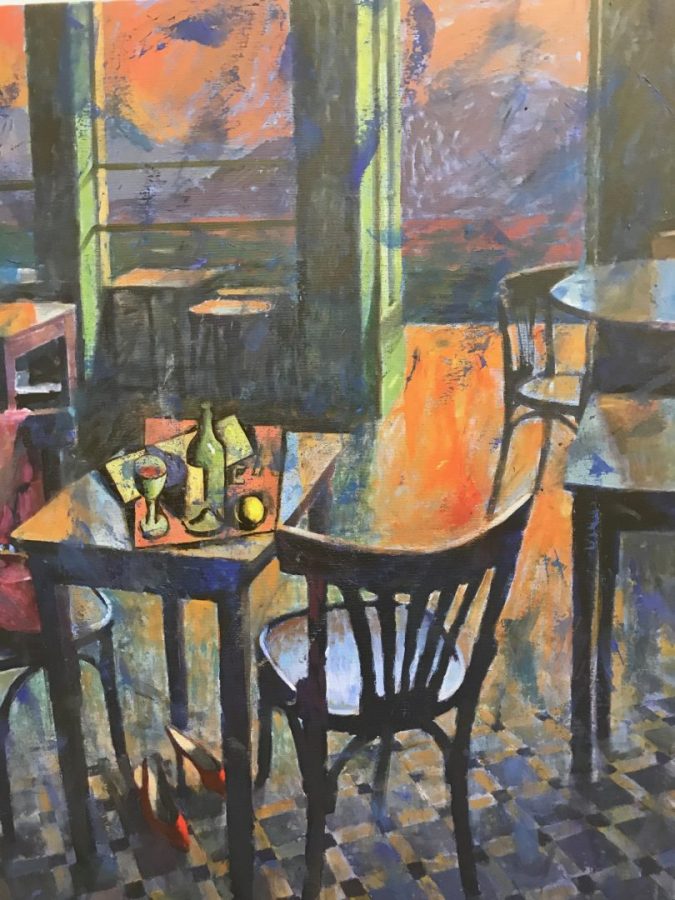
Cafe Athens
Samios believed that in that “cathartic space” of the kafeneio, people connected through everyday things. From football chat to “serious” political issues, often intermingled, you could hear, between the rolls of the dice or during an “eternal” game of cards, suppressed desires, neurotic dreams, confessions of the day, the night, a whole lifetime. Even the sharing of silence had its meaning”.
Samios’ paintings pulsate with the twist of a body to reach another, the caress of a hand, an imperceptible flutter of the eye, all those things that make up an erotic atmosphere, in the broad sense of the word. His painting is the apotheosis of everyday life, viewed from a metaphysical angle. “As if every moment that I live is eternal.”

Artist Pavlos Samios, 1948-2021
Born in Athens in 1948, he was involved in painting as a child, while also helping his shoemaker father. Samios’ trademark shoes appear in most of his paintings. A student of Moralis and Nikolaos and a close friend of Giannis Tsarouchis, their influence is evident in his work. After graduating from the Athens School of Fine Arts and starting his career in Athens, moved to Paris where he received international acclaim. Upon his return to Greece, he explored how to combine traditional techniques with contemporary concepts. In 2000, he was offered academic tenure at the Athens School of Fine Arts to lead the lab of Byzantine Art and Traditional Techniques. Samios’ work has been shown in over 75 solo exhibitions internationally, including Athens, London, Paris, New York, Boston, Beirut, and Istanbul. His work can be found in several museums and private collections around the world, and he has painted numerous chapels using the fresco technique. His portrait of Maria Callas is displayed at the Metropolitan Opera House in New York.

